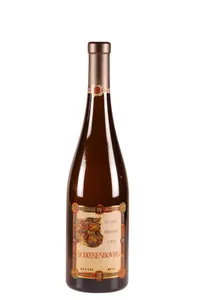The Deiss estate is located in Bergheim, a village nestled in the heart of Alsace wine country. Born into a family of winegrowers who had been living in Bergheim since 1744, Marcel Deiss chose the profession of arms at the age of 18 and left his native land. Returning to his homeland after the Second World War, he rediscovered his roots and developed his small landholding into a dynamic winegrowing business. Today, run by Jean-Michel and Mathieu Deiss, the estate covers 27 hectares spread over 9 communes and 20 kilometres. The extreme variety of the vineyard (220 plots) has led to a search for the exact balance between the affirmation of the place, the expression of the vintage and the framework of the grape variety for each vintage. The interaction between these factors makes it possible to distinguish the so-called "terroir" vintages: here the place alone expresses its mark, dominating the other contingencies. It determines the style, the exact personality, the very physiognomy of the wine. For the Grands Crus, the indication of the grape variety is often superfluous as the influence of the origin is so strong on its usual expression. This effort, combined with high planting densities (8,000 to 12,000 vines/hectare), makes it possible to express all the fine nuances of the place, its temperament, its deep singularity. According to Jean-Michel Deiss, planting a single grape variety, or even a single clone, prevents the full expression of the origin, like a person whose poor vocabulary prevents a rich language. In the Alsatian tradition, the wines of the terroirs were only named by the name of the place, complication becoming the rule of this requirement. As elsewhere, from Bordeaux to the Côtes-du-Rhône, via Burgundy, which until the 1950s used pinot noir, chardonnay and beurrot, and even aligoté in the Montrachet vineyard! It is for this reason that the Deiss family decided to stop using the grape variety and to name only the genius of the place, which means terroir and permanence of type, geology, pedology, climate and microclimates. Thus, the vineyard is managed using the old techniques of the Alsatian wine-growing tradition (ploughing, digging, composting, grassing), without weeding or chemical fertilizers. The wines produced naturally bear the mark of this requirement, the obvious trace of this vocation to express a landscape. This excellence has been celebrated for many years by the world's greatest wine specialists, bringing the estate's production to the highest level in Alsace.













